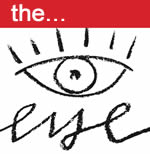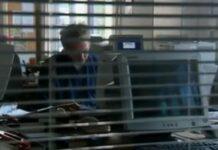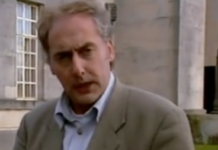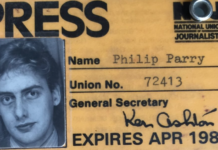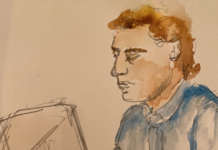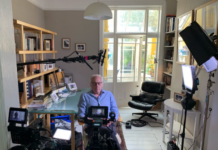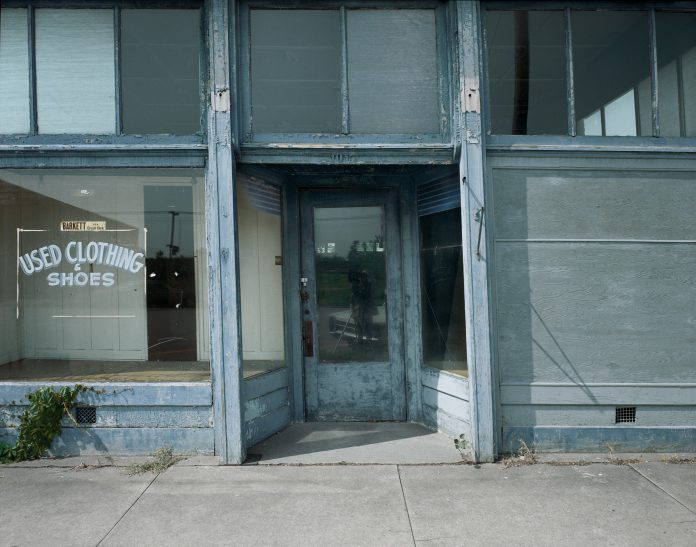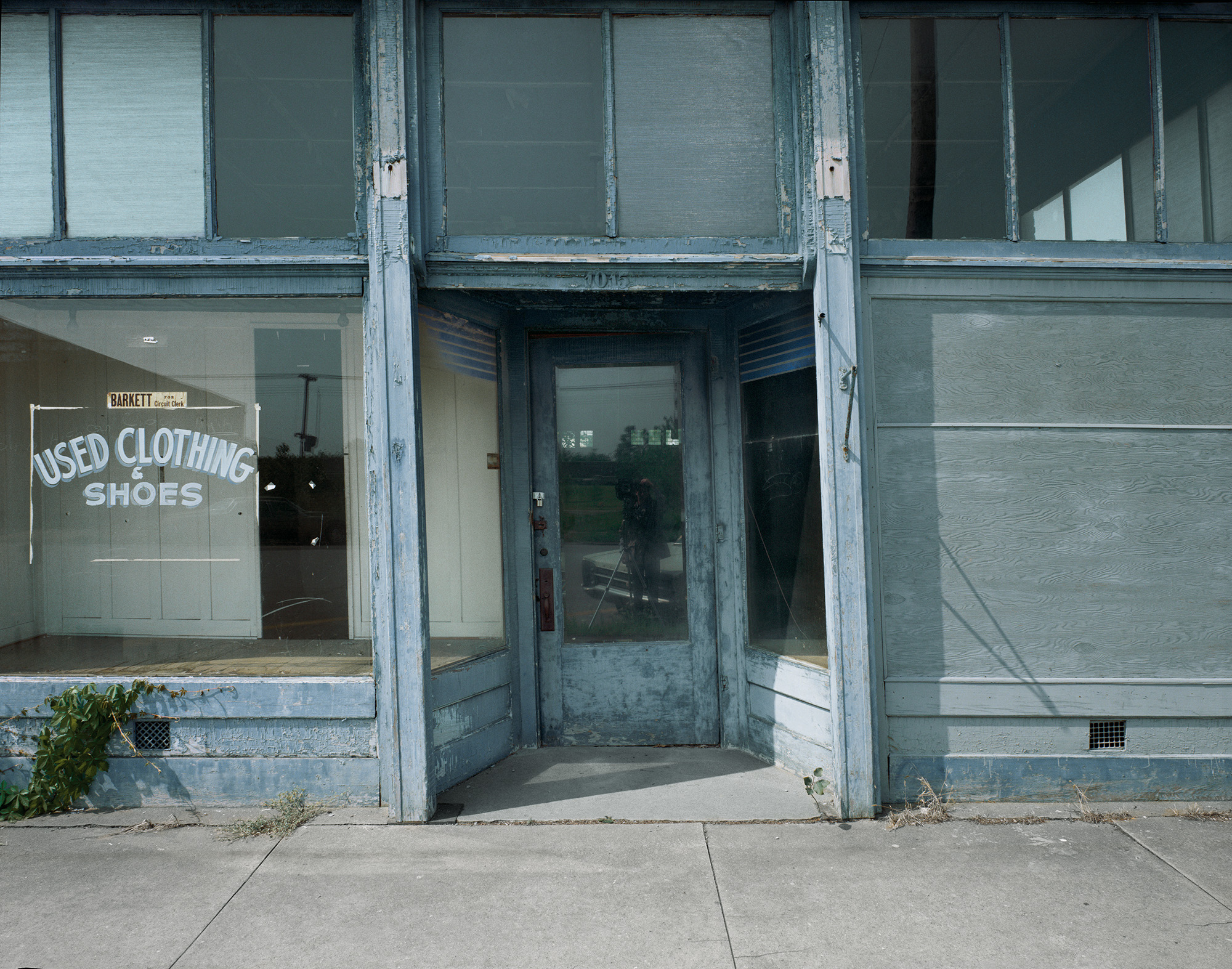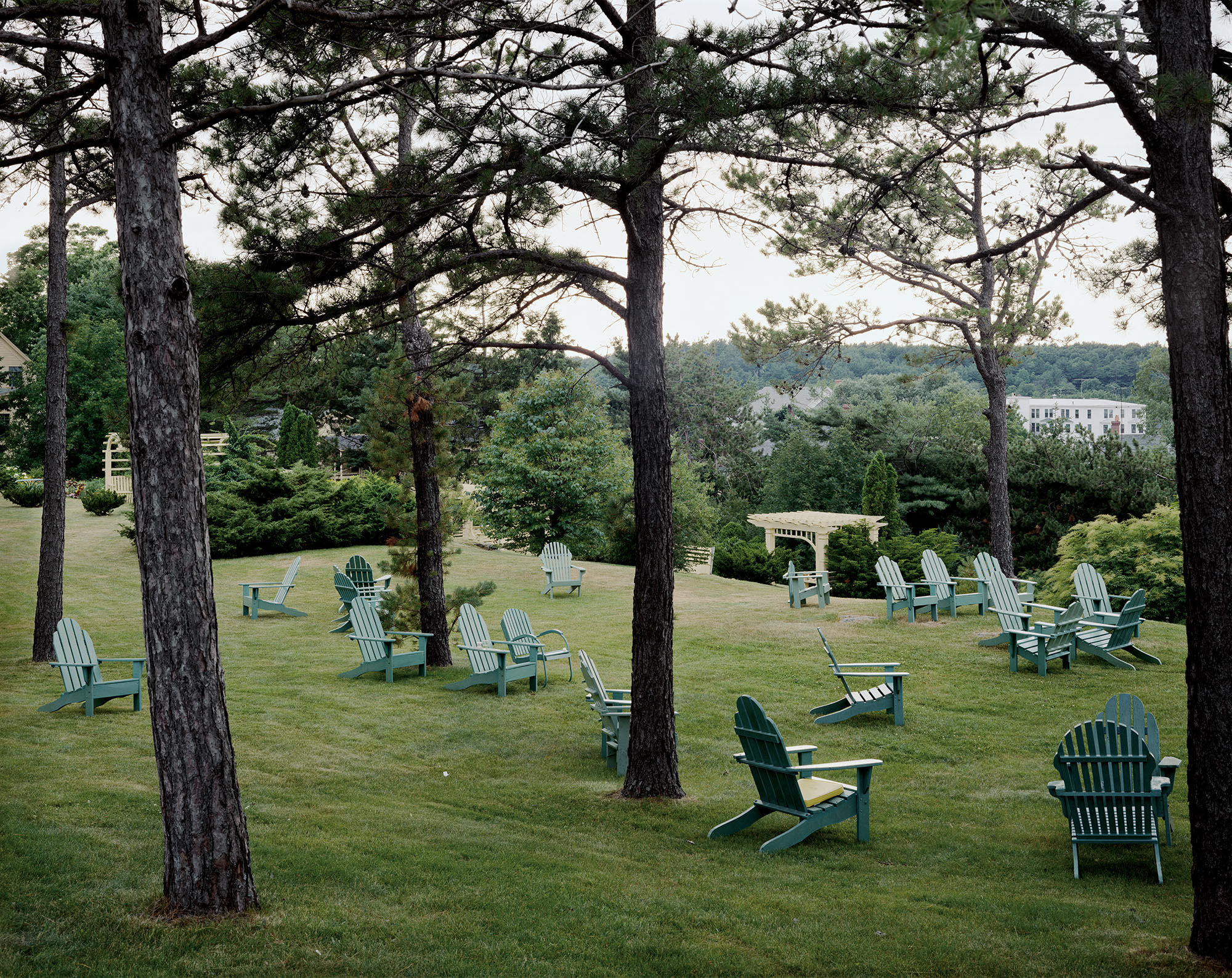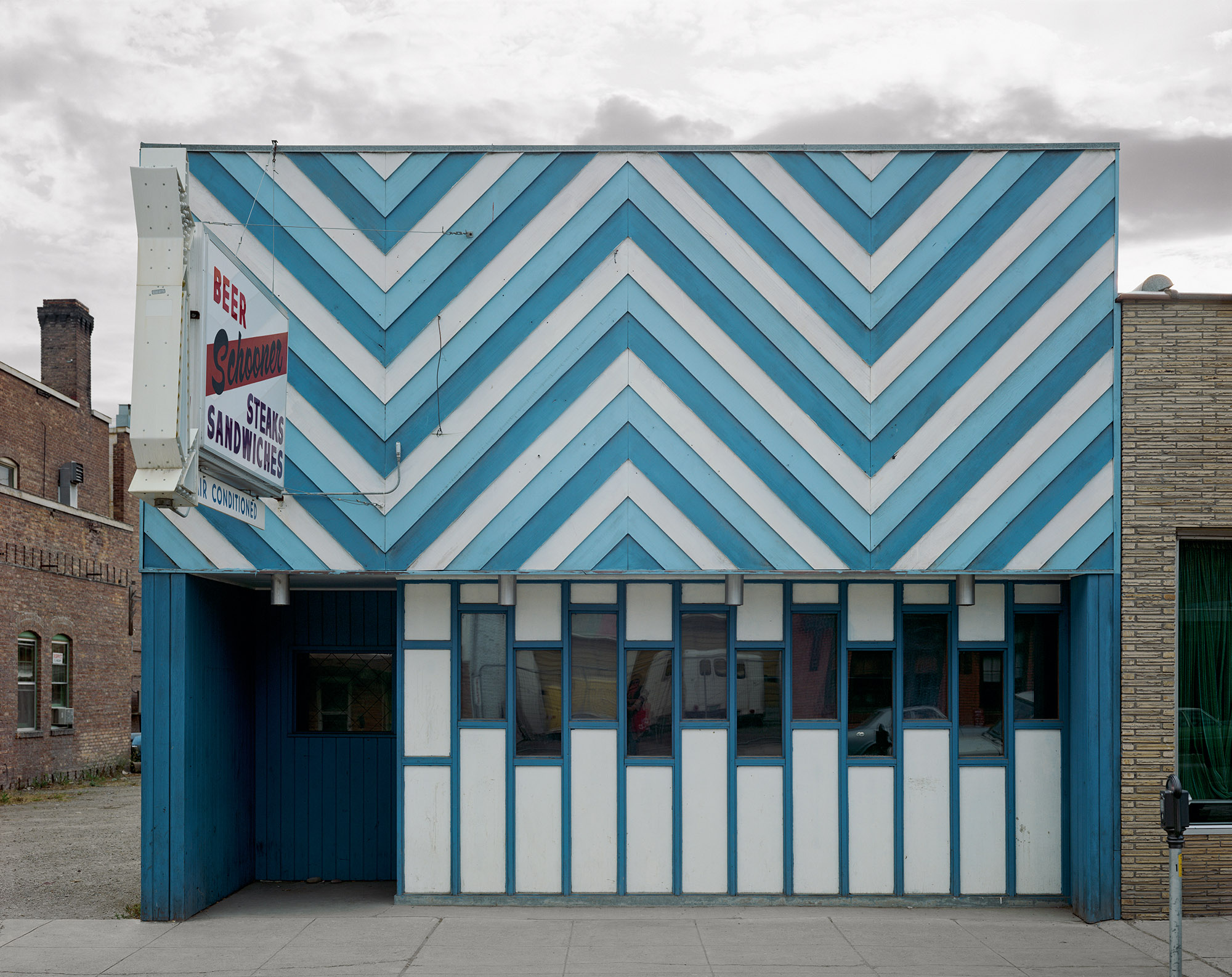- Hacked off again - 19th December 2025
- Massage table part two - 18th December 2025
- Massage table part one - 17th December 2025
I
These photographs are, ostensibly, different: a blue, shuttered used-clothing store; a blue car parked on a street and a bank in the background; twenty blue Adirondack chairs scattered on a spacious green lawn; and, a blue-and-white-striped restaurant facade.
In each but the photograph with twenty chairs, windows figure inside the frame. The bank and car have windows; both storefronts do. But none is there to see through, as if transparent, none is what a photograph once was called, a window into the world. Instead, the windows are covered, partially blocked, or opaque.
Looking at the used-clothing store, I can imagine a story for it:
A twenty-four-year-old man standing in front of it. He’s just walked a few miles into the small city, because he needed food for a week, a new pair of Nikes. Maybe he wanted to see people, though the city looked deserted. Weird. He didn’t want to make friends, that would happen, he didn’t want to make things happen, because the right thing would come along. Fate. He relied on chance.
An abandoned clothing store sat lonely on a side street, shut down tight and shabby. There was something sad about it. He stood there for a long while. The blue painted storefront kept everything hidden. No interior life. Funny, he thought. Blue is a sad color. A kitten emerged from a hole in the wall, or from nowhere. And he picked her up. Tiny, she meowed. I’ll call her Blue, he thought, and put her on his shoulder. He knocked on the door of the store and then on the window, and waited to hear movement inside. Maybe someone still lived there, and this was her kitten.
This isn’t what the photograph represents; still, I could pin the narrative to its surface, like an ornament. There is no inherent story in the photograph, other than its composition.
Stephen Shore, Citizens Bank, Main Avenue, Weston, West Virginia, April 30, 1974, color photograph. Aperture, 2017.
In a blue 1970s car, the head of a man, on the passenger side, is visible; his right arm sticks out an open window, elbow resting on the car door. The man may be waiting for a friend, or the driver is beside him in the car, stopped at a red light. Will there be a bank robbery?
Man + waiting car + bank = a story.
The blue car is angular, sleek, long, and its metal detailing, which stretches across its sides, is designed to suggest the future ahead. Ahead, the bank, majestic and stony, stands in the background, dwarfing the car, pale blue sky above.
A blue car in the foreground, a blue sky above and in the background. A monumental bank, a massive shape, a neutral color, contrasts to the blue car; their scale is extremely different, their placement inside the frame exaggerates the bank’s dominance. It dwarfs the car. The eye cycles between car and bank, maybe to adjust to their visual dissimilarity. The empty streets create an open space, while the dark telephone poles and black electrical wires, crossing and intersecting, construct more shapes and planes.
This is not a picture of a car and bank, but a picture with them.
On a lush green lawn, the blue Adirondack chairs are welcoming, maybe a guest will appear soon. Each chair is also a common, everyday sculpture. And each chair suggests the presence of an absent individual or represents one.
It feels especially still, this image. The chairs, suspended in time, appear to be waiting to perform their function. The scattering of the color blue on a green background, color on color, creates its own palette. Shore’s photograph is a picture of quiet, blue resting on green, a serene composition.
The steak restaurant’s facade is a pattern of blue, pale blue, and white stripes, blue and white rectangles beneath. Behind the rectangular windows, there is darkness. The windows only barely reflect the exterior, the space in front of the restaurant. The building is box shaped, its entryway dark, almost ominous. Above its dizzying op art–like facade, a stormy blue-gray sky hangs. A dark-red diagonal across the restaurant’s white sign, which juts out from above the entryway, jars the eye. BEER is also in red.
I don’t know of another Shore photograph like this one. It relies on the patterns, almost like a Matisse painting of textiles, to make a picture of lines and shapes in movement.
The play of blue and its placement in all of these photographs pulled them together in my mind. Visually, they related to each other. Though Shore’s strategy with blue varies significantly—planes of blue; stripes; lines; squares; rectangles, shades of color, and sizes and shapes of blue objects—a color in relationship to other colors, and on its own, shaped the compositions.
Stephen Shore, Schooner Restaurant, First Avenue East, Kalispell, Montana, August 22, 1974, color photograph. Aperture, 2017.
II
Along with other “serious” photographers, in the 1960s, when Shore came of age, he shot in black and white. Before the 1970s, color photography was regarded as pedestrian, meant for amateurs and family snapshots. Art photography was in black and white.
Black and white, with which photography began and which was a necessity, over time became its virtue. Life is in color, familiar, expected. People are surrounded by color. Color is what people see, even if they don’t notice it: colors of street signs; trees, flowers; faces, eyes, hair. Lawns are green or brown, if parched; oceans gray-green, with white, furling waves. White snow blankets mountains or falls on city streets, transforming a city until cars ruin the scene, leaving dirty fumes on the white mounds, or dogs urinate yellow on them.
If color entered the field, photography would be even more like reality, and further from being considered art. Strange now that the presence of color was feared, that it would negate the medium’s artfulness.
Throughout its short history, photographers have fought for their medium to be considered an art, not just a visionless recording of what appeared in front of a camera lens. Anyone couldn’t take a great picture. A photograph wasn’t just about mimesis.
When Stephen Shore and William Eggleston, famously ignoring the art/amateur dilemma, took up color, they demonstrated that a color photographer who paid attention to life, to so-called ordinary scenes, a breakfast plate or a theater marquee, could transform reality. Color could make the familiar unfamiliar, or color would be noticed, recognized, by insisting on its value within a frame. It depended upon the photographer to find the composition and to reorganize how people recognize what they ordinarily see, but don’t see, differently. To value it, differently.
In these blue Shores, the apparent, or manifest, content provides objects, identifiable things, to look at, but what shapes the objects into pictures is their composition, framing, and the color blue. Shore’s subject matter is primarily the formal elements that determine pictures, that make a photograph into a picture. It’s how I, in my nonexpert way, decide when I recognize a work as a work of art.
Maybe I can explain that best, though it isn’t an explanation but an association, with an excerpt from Wallace Stevens’s poem “The Man with the Blue Guitar”:
The man bent over his guitar,
A shearsman of sorts. The day was green.They said, “You have a blue guitar,
You do not play things as they are.”The man replied, “Things as they are
Are changed upon the blue guitar.”And they said then, “But play, you must,
A tune beyond us, yet ourselves,A tune upon the blue guitar
Of things exactly as they are.”
The poem reminds me of these photographs, and what color is, and how it expresses and is also inexpressible or different from any articulations about it. The poem says something about blue, as Derek Jarman’s film Blue did also. Maybe it’s best for me just to say that a photograph never completely or adequately shows what it is.
Lynne Tillman is a novelist, short-story writer, and cultural critic.
This essay is excerpted from Stephen Shore: Selected Works 1973–1981. All images © Stephen Shore, courtesy 303 Gallery.
Source: Paris Review
